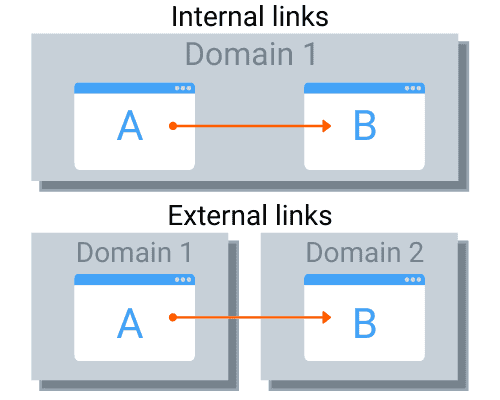
10 Tips for an Awesome and SEO-friendly Blog Post
When we chat with friends, we like it best when they understand us, right?
That's how your blog should talk to search engines, and that's what we call SEO-friendly!
In simple terms, SEO, or Search Engine Optimization, helps your blog speak the same language as search engines like Google.
When this happens, your blog pops up faster in search results, making it easy for people to find and read it. The cooler your blog is to Google, the more people are likely to visit it!
Before diving in, let's quickly look at the exciting journey ahead. We'll explore ten tips that'll make your blog post awesome and SEO-friendly. We'll unravel the secrets of keywords, quality content, the right use of headings, and much more!
Ready?
Let's jump in!
What is SEO?
So, what's this SEO thing everyone keeps talking about?
Well, imagine you're playing hide-and-seek. SEO helps your blog get found in the vast digital playground of the internet. It's a set of rules or tips that, when followed, make your blog more attractive to search engines like Google.
It's like putting up bright, flashy signs on your blog, saying, “Here I am! Come and read me!”
Why is SEO Important for Your Blog Posts?
Picture your blog as a tiny fish in the big ocean of the internet. There are millions, maybe billions, of other blogs out there.
How can your blog stand out?
That's where SEO comes in. It helps your blog get noticed by search engines, pushing it toward the top of search results. So when people look for topics you've written about, they find your blog quicker.
In simple words, SEO helps your blog reach more people, and who doesn't want that, right?
Read More: A Detailed Guide on How to Write an SEO-Optimized Article
Keyword Research
What is Keyword Research?

Keywords are like magic words. They're the words or phrases people type into search engines when they're looking for something online. Keyword research means finding the right magic words related to your blog topic. People are likely to search for these words when they want to find a blog like yours.
Read More: How to Do Keyword Research for SEO: A Beginner’s Guide
Steps on How to Do Keyword Research
Keyword research might sound tough, but it's actually pretty simple!
- First, think about your blog topic. What words would you type into Google if you were looking for your blog? Write them down.
- Next, use a keyword tool. These are special tools that help you find popular keywords. Google Keyword Planner is a free tool you can use.
- Type your words into the tool. It will give you a list of similar words people often search for. Choose the ones that fit your blog best.
Why Keywords Are Important in a Blog Post
Imagine you have a map leading to a treasure chest (your blog post). Keywords are like markers on that map. They guide search engines and people to your blog. Placing them in your title, headers, and throughout your text helps Google understand what your blog is about. When people search for those keywords, Google knows to show them your blog.
Neat, right?
Creating Quality Content
Quality Over Quantity: Why It Matters
It's easy to think that writing a lot of blog posts is the key to success. But the truth is quality is way more important than quantity. It's better to write one really good blog post than ten okay ones. Readers prefer blogs that are interesting, helpful, and well-written. If they like what they read, they'll stick around for more.
How Quality Content Impacts SEO
Search engines like Google love quality content, too. When your blog provides valuable information, people spend more time reading it. They might even share it with their friends.
Google sees this and thinks, “Wow, this blog must be really good!”
As a result, it's more likely to recommend your blog to others.
Tips for Improving Content Quality
Improving content quality isn't hard. Here are a few tips:
- Write about what you know. You can provide the best information on topics you're familiar with.
- Make your blog interesting. Use stories, examples, and pictures to keep readers engaged.
- Check your work. Make sure your blog has no spelling or grammar mistakes.
Proper Use of Headings
What are HTML Header Tags?
HTML header tags are like labels on a box. They tell you (and search engines) what's inside each section of your blog. There are six types of header tags, from H1 to H6. H1 tags are for main titles. H2 to H6 tags are for subheadings. Each level (H2, H3, etc.) gets smaller, helping to organize your content.
Why Headings are Important for SEO and Readability
Headings are super important for two reasons. First, they help Google understand your blog. When you use keywords in your headings, Google gets a clear picture of what your blog is about. Second, headings make your blog easier to read. They break up your text into sections, so readers can easily find what they're interested in.
Optimize Meta Descriptions and Title Tags
What are Meta Descriptions and Title Tags?

Think of your blog post as a book. The title tag is like the book's title, and the meta description is like the blurb on the back cover. Title tags are the titles of your web pages that appear in search results. Meta descriptions are the summaries that appear below the title. Both give people and search engines a quick idea of your blog post.
Writing Effective Meta Descriptions and Title Tags for SEO
Writing catchy title tags and meta descriptions is easier than you might think.
- For title tags, keep it short and sweet. Include your main keyword. Make it sound exciting to make people want to click and read more.
- For meta descriptions, give a brief summary of your blog post. Again, include your main keyword. Your goal is to make readers think, “This is exactly what I'm looking for!”
Utilizing Internal and External Links
What are Internal and External Links?

Links are like bridges in your blog post. Internal links are bridges that lead to other pages on your own blog. External links are bridges that lead to other people's websites. Both types of links help readers find more useful information.
Why Links Matter for SEO
Links are super important for SEO. Internal links help search engines understand your blog's content and how it's all connected. External links show that other reputable sites support your content. This can make your blog seem more trustworthy and valuable.
Best Practices for Linking
When adding links to your blog post, remember:
- Make sure the links are useful. Don't just add links for the sake of adding links.
- Check the sites you're linking to. Make sure they're good quality and safe for your readers.
- Don't overdo it. Too many links can make your blog post look messy and confusing.
Using Relevant Images and Alt Text
Benefits of Using Images in Blog Posts
Pictures aren't just pretty decorations for your blog post. They can also help explain your points better, break up long pieces of text, and make your blog post more enjoyable to read.
After all, who doesn't like looking at interesting pictures?
What is Alt Text and Why is It Important for SEO?

Alt text is like a name tag for your images. It's a short description that tells search engines what's in the picture. This is super important for SEO because search engines can't see images as we do. They rely on alt text to understand what the image is about. Including your keywords in your alt text can also help your blog post appear in image search results. Double win!
Mobile Optimization
Why Mobile Optimization is Important Today

Today, almost everyone has a smartphone. It's like having a mini-computer in your pocket! Many people use their phones to read blog posts while commuting, waiting in line, or relaxing at home. That's why ensuring your blog looks good and works well on smaller screens is important. This is what we call mobile optimization.
How Mobile Optimization Helps SEO
Search engines like Google care a lot about mobile optimization. If your blog is easy to read and navigate on the phone, Google will be more likely to show it to people who are searching on their mobile devices. So, by making your blog mobile-friendly, you're helping it reach more people!
Read More: Why User Experience Is Vital for Quality SEO
Regularly Update Your Content
Why Updating Content Matters for SEO
The internet is always changing and growing. What worked a year ago might not work today. That's why keeping your blog posts fresh and up-to-date is crucial. Regularly updating your content shows search engines that your blog is alive and kicking, which can help it rank higher in search results.
Tips for Revising and Updating Old Blog Posts
Don't worry; updating your blog posts doesn't have to be a big chore. Here are some tips to make it easier:
Look for any outdated information and replace it with the latest facts.
Check your links. Are they all still working and relevant?
See if you can add new keywords, images, or examples to improve your post.
Encourage Social Sharing
Why Social Sharing Helps SEO and Visibility
When people share your blog posts on social media, it's like they're giving your blog a big thumbs up. Not only does this help more people see your blog, but it also signals to search engines that your content is valuable and popular. This can give your SEO a nice boost!
How to Get Readers to Share Your Content on Social Media
There are lots of ways to encourage social sharing. Here are a few ideas:
- Include social sharing buttons on your blog posts. This makes it super easy for readers to share your content with just a click.
- Write great content! When people really enjoy or learn something from your blog post, they'll be more likely to share it with their friends.
- Don't be shy about asking! At the end of your blog post, invite your readers to share it on their social media platforms. Sometimes, all it takes is a friendly reminder.
Use of SEO Tools and Plugins
Meet Some Popular SEO Tools and Plugins
Imagine if you had a handy helper to make SEO easier. Good news – you do! There are many SEO tools and plugins out there that can help. Some popular ones include Google Keyword Planner for keyword research, Yoast SEO for WordPress sites, and Moz for SEO analysis. They're like super tools for your SEO toolbox!
How SEO Tools and Plugins Can Boost Your SEO Game
SEO tools and plugins are like shortcuts on your SEO journey. They can help you find the best keywords, suggest improvements for your blog, and even check how well you're doing. These tools can save you time, simplify SEO, and help your blog reach more people.
Win, win, win!
Conclusion
We've explored ten super tips that can make your blog post both amazing to read and friendly to search engines.
We've talked about keywords, quality content, headings, meta descriptions, links, images, mobile optimization, updating content, social sharing, and SEO tools.
Quite a list, isn't it?
Don't settle for less when it comes to SEO Services – choose ManagingSEO, the leading SEO Agency in Pakistan.

Leave a Comment